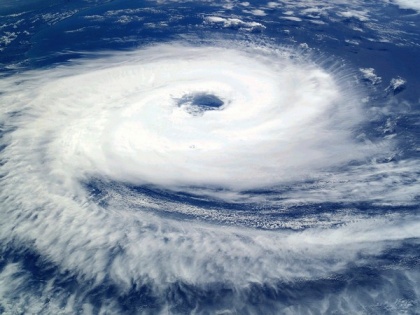'Intensity of severe cyclonic storms increasing in the North Indian Ocean region due to atmospheric parameters related to global warming'
By ANI | Published: July 29, 2021 10:11 PM2021-07-29T22:11:28+5:302021-07-29T22:20:12+5:30
The intensity of severe cyclonic storms in the North Indian Ocean region has shown an increasing trend in the past four decades, as per a recent study by Indian scientists.

'Intensity of severe cyclonic storms increasing in the North Indian Ocean region due to atmospheric parameters related to global warming'
The intensity of severe cyclonic storms in the North Indian Ocean region has shown an increasing trend in the past four decades, as per a recent study by Indian scientists.
The increasing intensity of severe cyclonic storms with major socioeconomic implications was due to atmospheric parameters like higher relative humidity, especially at mid atmospheric level, weak vertical wind shear as well as warm sea surface temperature (SST). This indicates the role of global warming in bringing about this increasing trend, read the release by the Ministry of Science & Technology.
The impact of global warming due to climate change and its effect on extreme weather events such as frequency and high-intensity tropical cyclones formed over global ocean basins is a matter of concern.
High-intensity cyclones have become more frequent in the North Indian Ocean, causing significant risk and vulnerability to the coastal regions.
A team of scientists including Jiya Albert, Athira Krishnan, and Prasad K. Bhaskaran from the Department of Ocean Engineering & Naval Architecture, IIT Kharagpur, collaborated with K. S. Singh, Centre for Disaster Mitigation and Management, VIT University, Vellore, with the support from the Department of Science & Technology, Government of India under the Climate Change Programme (CCP) and studied the role and influence of critical atmospheric parameters in large-scale environmental flow and El Nino-Southern Oscillation (ENSO) on tropical cyclone activity in the North Indian Ocean.
The research which demonstrated substantial correlation with a measure on the destructive potential of tropical cyclones called Power Dissipation Index was published in the journal 'Climate Dynamics', Springer recently.
According to the Ministry of Science & Technology, findings from the study indicate that strong mid-level relative humidity (RH), positive low-level relative vorticity (RV), weak vertical wind shear (VWS), warm sea surface temperature (SST), and suppressed outgoing long-wave radiation (OLR) are responsible for the increased tropical cyclone activity in the North Indian Ocean as they were found distinct during pre-monsoon seasons of La Nina, and that helps in severe cyclone formation over this region.
"Environmental variables such as SST, wind streamlines, Vertical Velocity, and Specific Humidity exhibited comparable contributions towards cyclogenesis during both El Nino and La Nina phases. Investigation of the role of additional parameters such as water vapor and zonal Sea Level Pressure gradients revealed the possible linkage of La Nina years on increased severity of tropical cyclones," read the release.
The study reported an increased amount of water vapor content in the troposphere, and during the past 38 years at 1.93 times as compared to the base year 1979.
During the past two decades (2000-2020), the La Nina years experienced almost double the number of intense cyclones compared to the El Nino years. Besides, during La Nina years, the positional shifts in the average cyclogenesis of intense cyclones in the Bay of Bengal are analogous with the observations for the western North Pacific Ocean basin.
An increasing trend in the climatological distribution of water vapor content was also seen during these years, with peaks localized over the Andaman Sea and North China Sea regions in conjunction with the increased frequency of severe cyclones.
The new findings from this study are expected to augment advanced research in tropical cyclone activity for North Indian Ocean region and also provide the scope for a detailed investigation on the possible linkages and teleconnection with other climate indices over the North Indian Ocean, the Ministry of Science & Technology said.
( With inputs from ANI )
Disclaimer: This post has been auto-published from an agency feed without any modifications to the text and has not been reviewed by an editor
Open in app